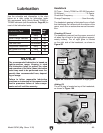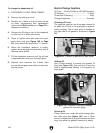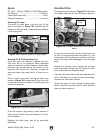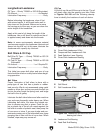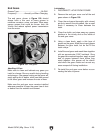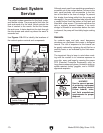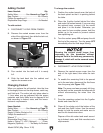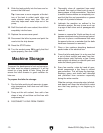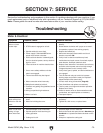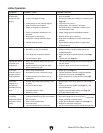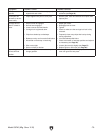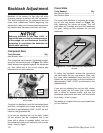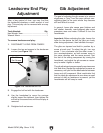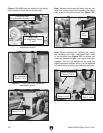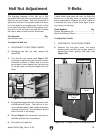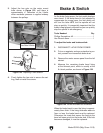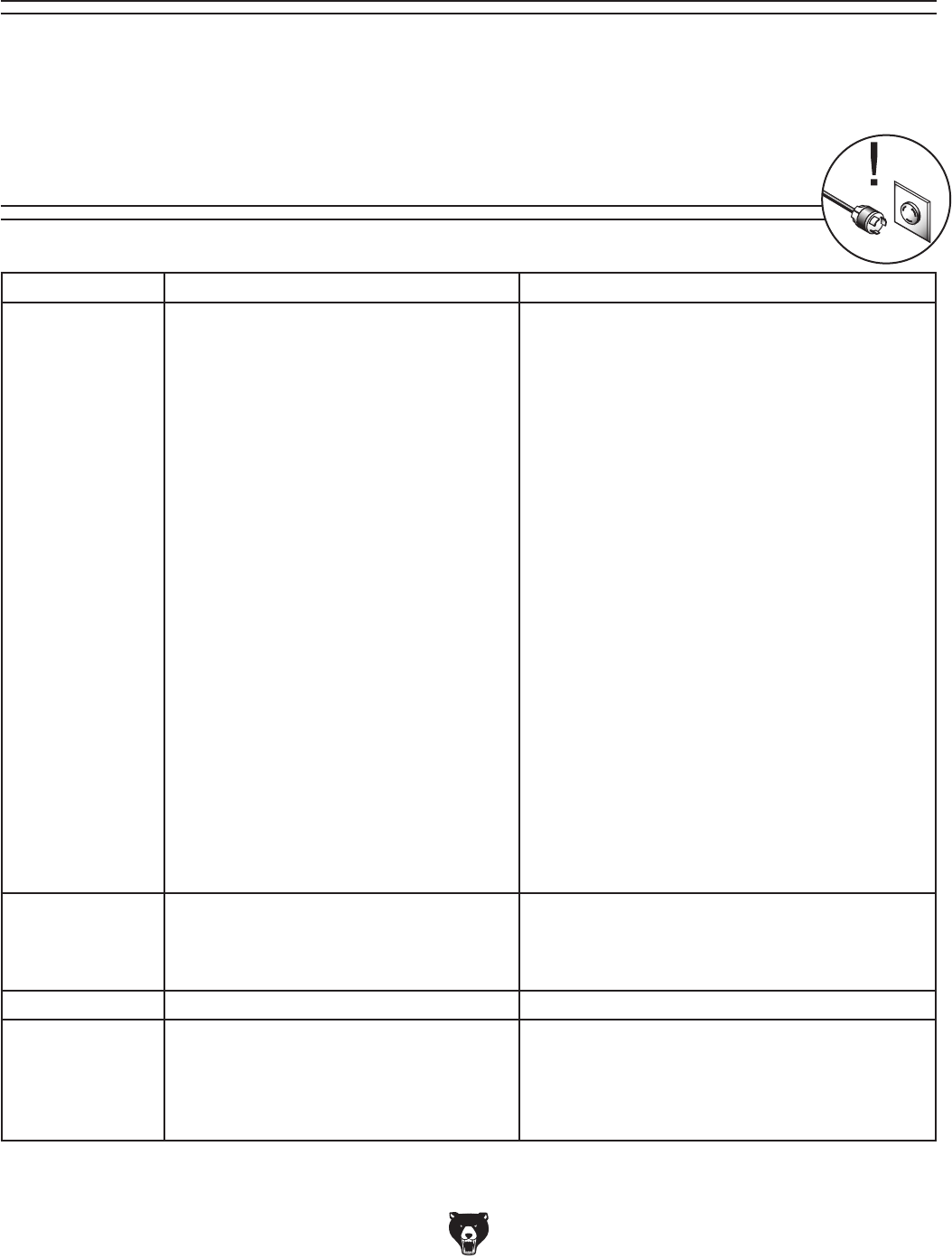
Model G0740 (Mfg. Since 11/12)
-73-
Review the troubleshooting and procedures in this section if a problem develops with your machine. If you
need replacement parts or additional help with a procedure, call our Technical Support at (570) 546-9663.
Note: Please gather the serial number and manufacture date of your machine before calling.
SECTION 7: SERVICE
Troubleshooting
Motor & Electrical
Symptom Possible Cause Possible Solution
Machine does not
start or a circuit
breaker trips.
1. Motor will start, only backward.
2. STOP button is engaged or at fault.
3. Spindle switch(es) are at fault.
4. Power supply is switched OFF at two-
speed motor switch or breaker.
5. Wall fuse/circuit breaker is blown/tripped;
short in electrical system; start-up load too
high for circuit.
6. Fuse has blown in machine electrical box.
7. One or more safety switches or brake
switch are engaged.
8. Thermal overload relay has tripped.
9. Motor connection wired incorrectly.
10. Safety/brake switch(es) at fault.
11. Contactor not getting energized/has burned
contacts.
12. Wiring is open/has high resistance.
13. Motor is at fault.
1. Correct out-of-phase wiring (refer to Page 17 for
details).
2. Rotate button clockwise until it pops out to reset it
for operation; replace if not working properly.
3. Replace bad switch(es).
4. Make sure two-speed motor switch and circuit
breaker are turned ON.
5. Verify circuit is rated for machine amp load;
troubleshoot and repair cause of overload; replace
weak breaker; find/repair electrical short.
6. Replace fuse; determine if overload is due to heavy
operation; ensure power source has high enough
voltage and power cord is correctly sized.
7. Verify chuck guard, spindle, and brake switches are
not engaged.
8. Turn the thermal relay cut-out dial to increase
working amps and push the reset pin. Replace if
tripped multiple times (weak relay).
9. Correct motor wiring connections (Page 90).
10. Test all switches and replace as necessary.
11. Test for power on all legs and contactor operation.
Replace unit if faulty.
12. Check for broken wires or disconnected/corroded
connections, and repair/replace as necessary.
13. Test/repair/replace.
Loud, repetitious
noise coming from
lathe at or near the
motor.
1. Pulley set screws or keys are missing or
loose.
2. Motor fan is hitting the cover.
1. Inspect keys and set screws. Replace or tighten if
necessary.
2. Tighten fan, shim cover, or replace items.
Motor overheats. 1. Motor overloaded. 1. Allow motor to cool; reduce load on motor.
Motor is loud when
cutting, or bogs
down under load.
1. Excessive depth of cut or feed rate.
2. Spindle speed or feed rate wrong for
cutting operation.
3. Cutting tool is dull.
1. Decrease depth of cut or feed rate.
2. Refer to the feeds and speed charts in Machinery's
Handbook or a speeds and feeds calculator on the
internet.
3. Sharpen or replace the cutting tool.



